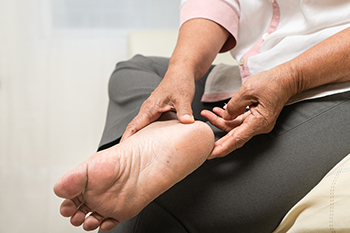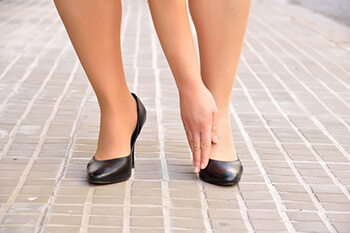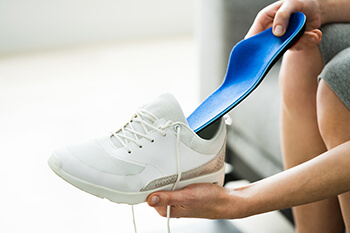
Tarsal tunnel syndrome is a foot condition that can be painful. The tibial nerve is found inside the tarsal tunnel, and an injury can cause this nerve to become compressed. It may also occur from having an abnormal foot structure, such as flat feet or a bone spur. The tibial nerve is located in the ankle and allows movement and feeling in various parts of the foot. The tarsal tunnel lies in the back of the inside of the ankle, and when this nerve is irritated in this narrow tunnel, tarsal tunnel syndrome can develop. Some of the symptoms that are associated with this foot condition can consist of a tingling or numbing sensation on the sole of the foot, and the toes may be difficult to move. Treatment generally begins with resting the foot and eliminating any activities that can cause discomfort. Some patients choose to wear orthotics, which may help reduce some of the symptoms. If the pain is severe and daily activities are difficult to accomplish, surgery may be an option to enlarge the tarsal tunnel. If you have this syndrome, it is suggested that you visit a podiatrist who can guide you toward the treatment that is best for you.
Tarsal tunnel syndrome can be very uncomfortable to live with. If you are experiencing tarsal tunnel syndrome, contact Scott Samera, DPM of Samera / Foot + Ankle. Our doctor can provide the care you need to keep you pain-free and on your feet.
Tarsal Tunnel Syndrome
Tarsal tunnel syndrome, which can also be called tibial nerve dysfunction, is an uncommon condition of misfiring peripheral nerves in the foot. The tibial nerve is the peripheral nerve in the leg responsible for sensation and movement of the foot and calf muscles. In tarsal tunnel syndrome, the tibial nerve is damaged, causing problems with movement and feeling in the foot of the affected leg.
Common Cause of Tarsal Tunnel Syndrome
- Involves pressure or an injury, direct pressure on the tibial nerve for an extended period of time, sometimes caused by other body structures close by or near the knee.
- Diseases that damage nerves, including diabetes, may cause tarsal tunnel syndrome.
- At times, tarsal tunnel syndrome can appear without an obvious cause in some cases.
The Effects of Tarsal Tunnel Syndrome
- Different sensations, an afflicted person may experience pain, tingling, burning or other unusual sensations in the foot of the affected leg.
- The foot muscles, toes and ankle become weaker, and curling your toes or flexing your foot can become difficult.
- If condition worsens, infections and ulcers may develop on the foot that is experiencing the syndrome.
A physical exam of the leg can help identify the presence of tarsal tunnel syndrome. Medical tests, such as a nerve biopsy, are also used to diagnose the condition. Patients may receive physical therapy and prescriptive medication. In extreme cases, some may require surgery.
If you have any questions please feel free to contact our office located in Lake City and Branford, FL . We offer the newest diagnostic and treatment technologies for all your foot and ankle needs.













